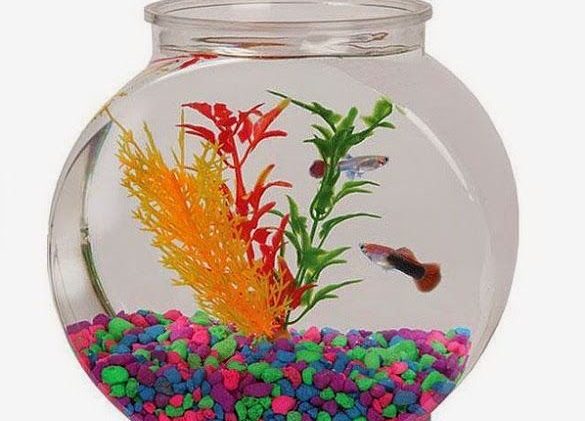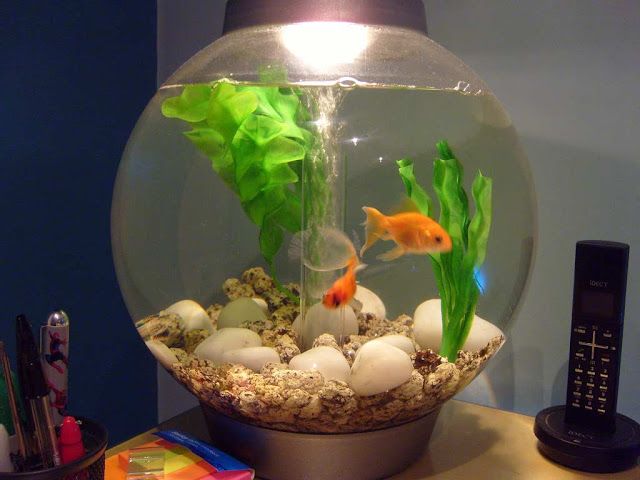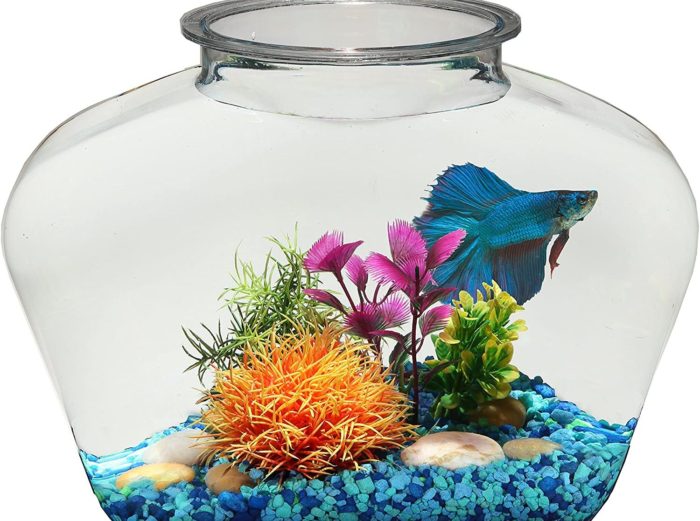A lot of people love eating fish in their several breeds and variants and some of us actually love having them as pets in glass fish bowls at our homes. The choice of where to house them is however not an easy and straightforward one as it is one that requires careful thoughts and consideration, taking into account the type of fish we intend to keep and the environment required for the sustenance. This is irrespective of the popularity of fish bowls which can be found in many homes with a pet fish.
You may decide to put your pet in a glass bowl, plastic tank, or some other materials more conducive to your beloved pet. But, you should be ready to face the consequences if you choose the wrong “home” for your fish. We would be looking at the cons of putting your fish in a glass fish bowl and why it may not be the best option for your beloved pet.
Table of Contents
These Are The Kind of Fish You Can Put in a Fish Bowl

If you must keep your fish in a bowl, it’s better to understand from the onset exactly what type of fish you can keep in the bowl in the first place and your commitment to your pet’s hygiene. The best type of fish to keep in bowls are the sturdy ones that are more tolerant in a “dirty” environment, and the fish that are not suicidal – this means prone to eating out of the bowl (probably due to boredom).
Fish breeds that will survive in a bowl include
- Pea Pufferfish
- Six-ray Corydoras
- Scarlet Badies
- Ember Tetra
- Guppies
- White Cloud Minnows
- Salt and Pepper Corydoras
- Zebra Danios
- Betta fish (which requires adequate heating to thrive).
The White Cloud Minnows will be the best bet to thrive more in a glass fish bowl and they are very tolerant of dirt in case you would be missing a few cleaning cycles of their bowls.
Is It Cruel To Use Glass Fish Bowls?
The decision to use a fish bowl by the pet owner is definitely not a cruel or wicked one, it may at best be a naïve or uninformed one. For small children who intend to own a pet fish and can’t pay attention to the cleaning requirements of the bowl or lacks the funds to buy a proper aquarium, the bowl may be their best bet to start with.
If the pet owner however intends to keep more than one fish or have various breeds in the same place, then building or buying a proper aquarium, like an acrylic one which is fitted with all the bells and whistle, is their best bet that will guarantee their pet lives a happy and fulfilled life.
Read Also: What Do Fish Eat?
Here’s Why Fish Bowls Are Bad For Your Fish

Fish, like all life forms, can only thrive in an environment that is conducive for their sustenance and well-being, and if such an environment cannot be created or guaranteed, the implications are always very grave and dire for these little pets. The natural inclination of very young fish lovers and pet owners (and possibly inexperienced adults as well) is to keep their beloved fish pets in a bowl and watch them swim around all day, but the fish bowls may not be the best option for your fish based on the following reasons:
Poor Surface-to-Air ratio
Fish, like we all know, live in water and what sustains them in that water is the level/quantity of dissolved oxygen therein; the higher the dissolved oxygen levels, the better for the fish, and the major determinant of the oxygen level is the surface to air ratio of the bowl – the surface area of the bowl available to interact with the oxygen in the atmosphere (or environment around the bowl). Most glass fish bowls are round with a very narrow rim which tends to restrict the surface-to-air ratio of the bowl.
Lack of filtration equipment/device
Most fish bowls, if not all, are too small to have filtration devices fixed in them, and if the pet owner isn’t careful to observe/ensure proper hygiene in the bowl, it may prove to be fatal for the fish housed therein. Filtration helps to remove the waste of the fish, build-up of bacteria and other such organisms, as well as to aerate the habitat of the fish. But since fish bowls lack this essential device, the harmful build-up of waste and bacteria in the container can eventually kill the fish in a very short time.
No Temperature Regulation
Most fish species that are put in bowls require a uniform temperature in their habitat, but as temperature regulation is not an in-built facility in most fish bowls, the fish may have to live in an unconducive environment. It is also not easy, to fit a heater on most fish bowls, hence, it may not be a good option for some breeds of fish that require warmer temperatures to be put in a bowl.
Read Also: How To Maintain Fish Tanks: 5 Facts You Need to Know
Size of the Bowl
The bowl may initially be conducive for small fish, but as they grow older and bigger, the limited size of the bowl will become less conducive. An adult fish (like the goldfish) suited for life in a bowl or aquarium will require between 15 to 20 gallons of water, but most (if not all bowls) usually have less capacity than this requirement for the fish living in it. Also, your fish will not have a proper place to rest, hide from predators or frightening circumstances in the bowl.
Low Oxygen Levels
As stated earlier, the surface-to-air ratio of fish bowls is very low and can only guarantee moderate levels of dissolved oxygen in the water, while this may be sufficient for some fish breeds, it may not be adequate for others and can eventually lead to suffocation for the fish – sounds strange, doesn’t it?
Lack of Covering Lid
Most glass fish bowls do not have a lid on them which is required to shield the fish from predators (like cats) or prevent harmful objects or substances from falling/getting into them. Overall, if you want better protection for your pet, you may have to consider other types of accommodation for it.
